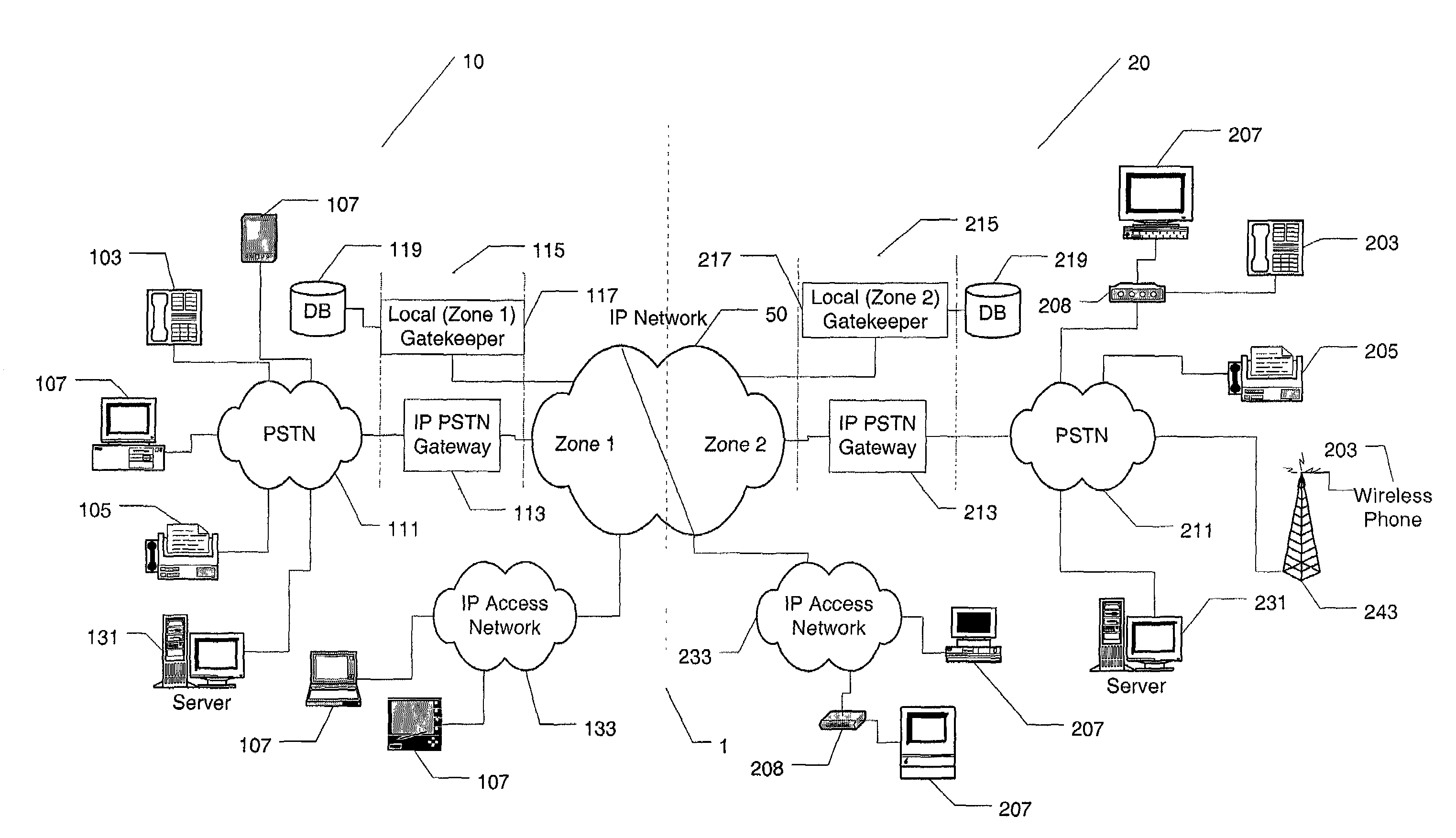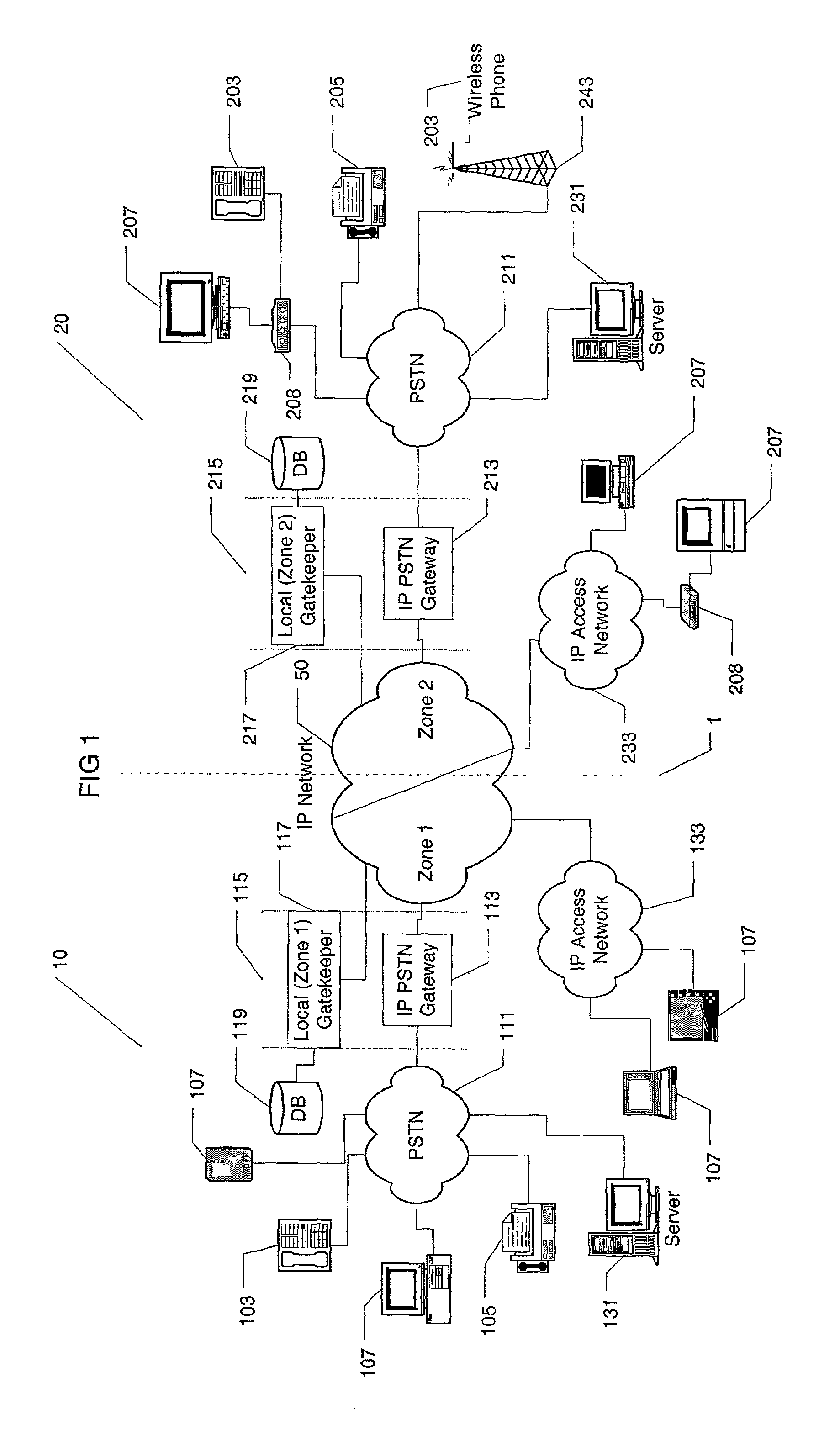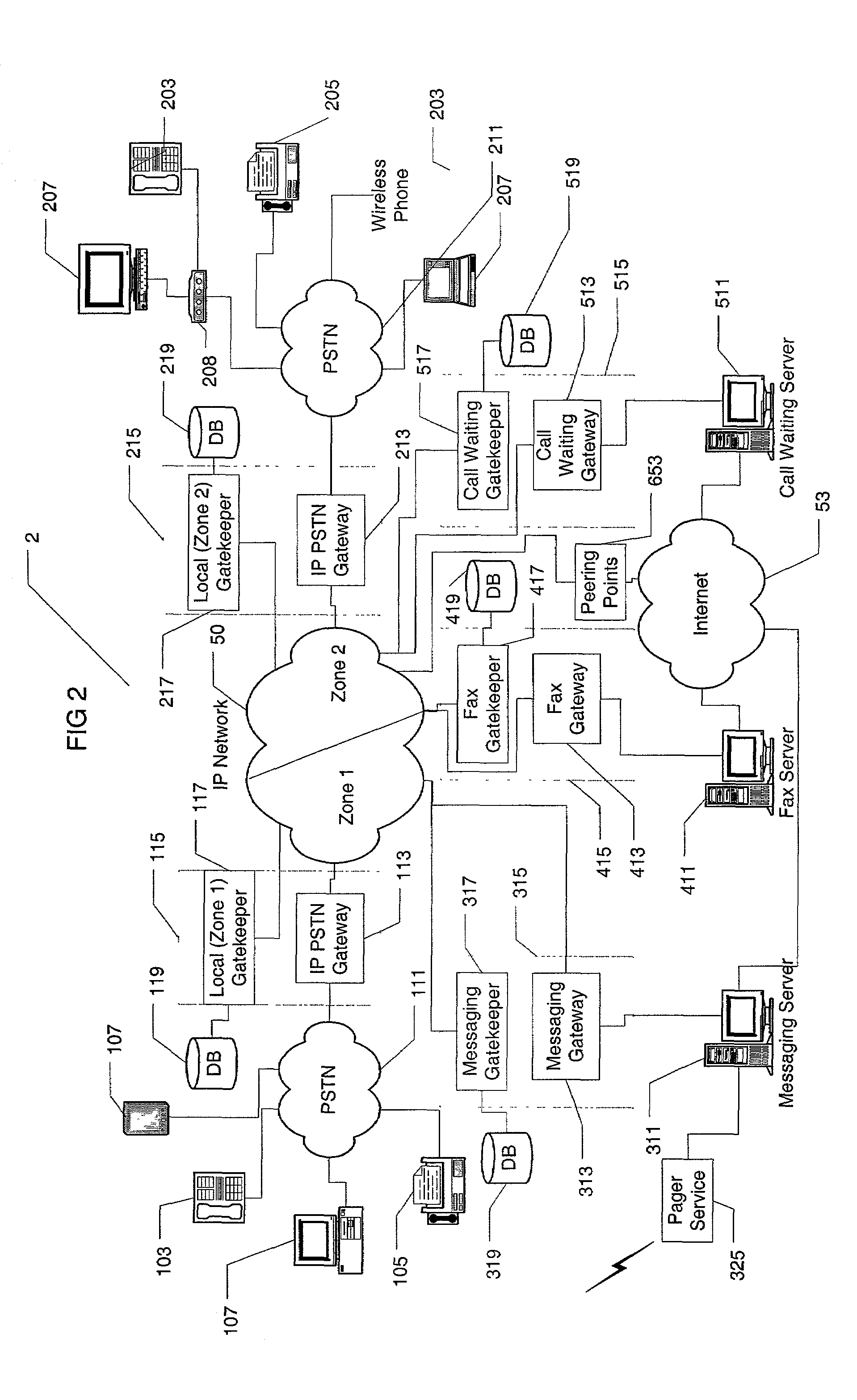Allocation of channel capacity in multiservice networks
a multi-service network and channel capacity technology, applied in data switching networks, frequency-division multiplexes, instruments, etc., can solve problems such as pstn system, voice and other transmissions that contain fairly constant streaming content, and depend on high-quality transportation, so as to achieve efficient utilization of network capacity and reserve capacity
- Summary
- Abstract
- Description
- Claims
- Application Information
AI Technical Summary
Benefits of technology
Problems solved by technology
Method used
Image
Examples
Embodiment Construction
)
[0023]This description will be primarily directed to the use of a gateway and gatekeeper making up an access point, and the transmission, using VoIP technology, of a traditional phone call (voice telephony) over a PSTN network and IP network of the type used in the United States. It would be understood by one of skill in the art that the functions described could be implemented by alternative access points. Alternatively, transmissions other than voice such as facsimile, electronic messaging, paging, or other data, or signals could be controlled by the same technology. The use of the term “call” is used to refer to voice telephony but a call could refer to any type of transmission. The same methods could be used for non-IP networks such as ATM networks to carry voice or other transmissions between the PSTN and / or other endpoints. The system and method could also be used over networks in other countries which may or may not be similar type PSTN networks or IP networks as those in th...
PUM
 Login to View More
Login to View More Abstract
Description
Claims
Application Information
 Login to View More
Login to View More - R&D
- Intellectual Property
- Life Sciences
- Materials
- Tech Scout
- Unparalleled Data Quality
- Higher Quality Content
- 60% Fewer Hallucinations
Browse by: Latest US Patents, China's latest patents, Technical Efficacy Thesaurus, Application Domain, Technology Topic, Popular Technical Reports.
© 2025 PatSnap. All rights reserved.Legal|Privacy policy|Modern Slavery Act Transparency Statement|Sitemap|About US| Contact US: help@patsnap.com



